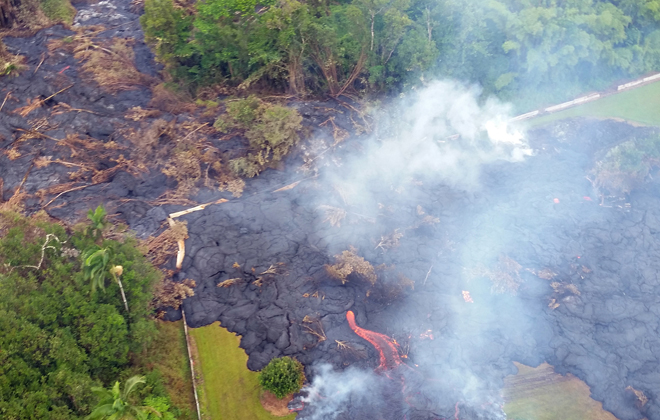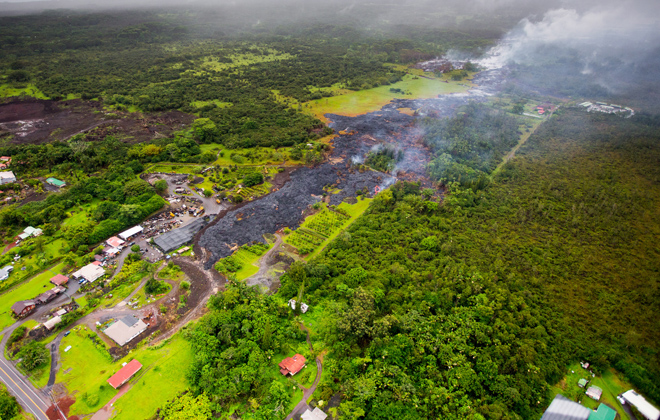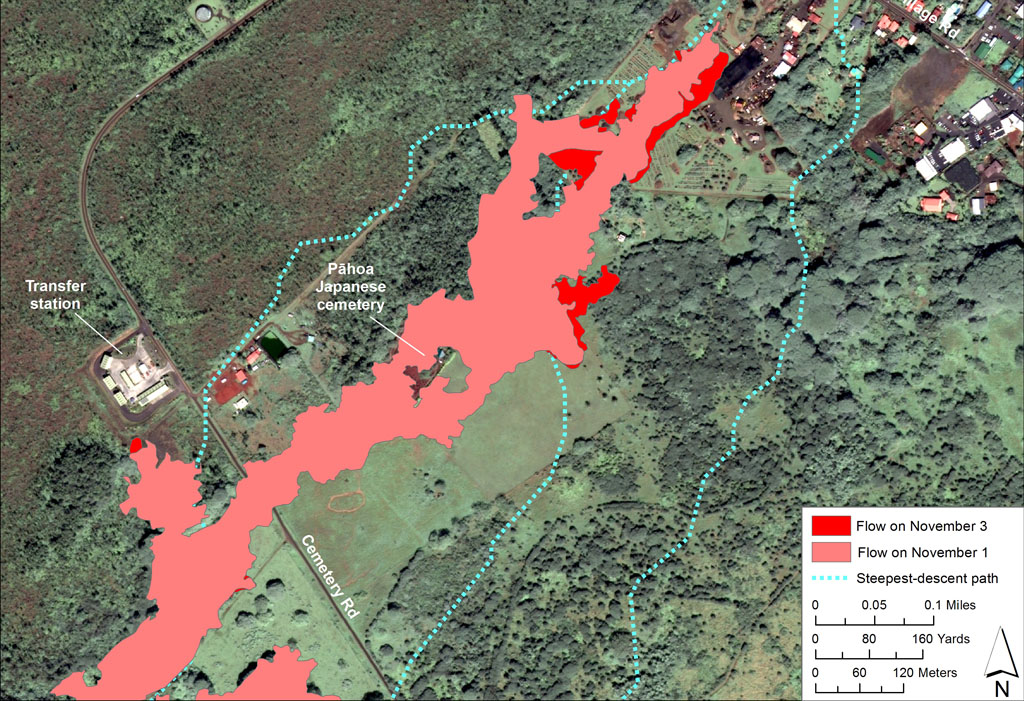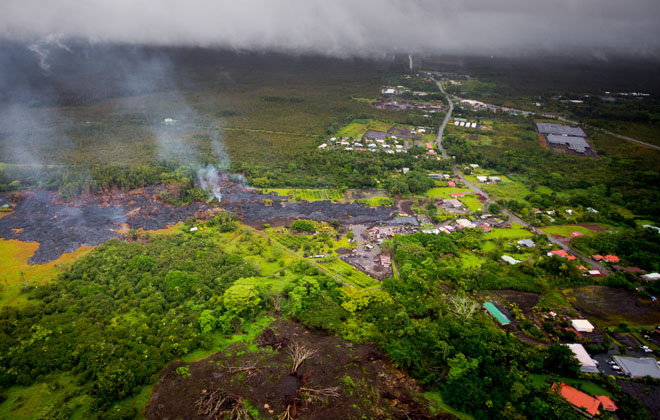Lava front remains stalled


The June 27 lava flow from Kilauea was seen approaching Pahoa on Monday in this aerial view.


The June 27 lava flow from Kilauea was seen approaching Pahoa on Monday in this aerial view.




Lava from Kilauea Volcano Tuesday continued to show “very little activity” but was burning some foliage above Apaa Street in Pahoa, the head of Hawaii County Civil Defense said.
There were “very little breakouts, very little activity around the margins or perimeter,” Darryl Oliveira said.
While the front of the flow remains stalled 480 feet from Pahoa Village Road — Pahoa’s main street — geologists and Civil Defense officials continue to monitor two breakouts farther back. One breakout about a mile above Apaa Street has advanced about 200 yards since Friday. Another, about half-a-mile from Apaa Street, has traveled about 75 to 80 yards since Friday, Oliveira said.
“Overall,” Oliveira said, “there’s very little activity anywhere on the flow.”
Since Friday, the summit of Kilauea has experienced an “inflation event,” meaning it was apparently filling back up with lava from the earth’s crust, said Mike Poland, a geologist with the Hawaiian Volcano Observatory. By Tuesday morning, the inflation event was “more or less over. We’re sort of it in the waning stages of that.”
Since the arrest of two local residents for investigation of trespassing beyond police barricades to allegedly collect lava on the end of golf clubs Thursday night, there have been no reports of trespassing and no arrests, Oliveira said.
Don't miss out on what's happening!
Stay in touch with breaking news, as it happens, conveniently in your email inbox. It's FREE!
Road blocks, manned by police and National Guard troops, are up on Pahoa Village Road between Apa’a Street and Post Office Road. But residents are allowed to travel past the road blocks.
Meanwhile, President Barack Obama signed a disaster declaration Monday for Hawaii, a move that authorizes federal reimbursement of state and county relief efforts to deal with the lava flow.
The county has spent more than $6 million on emergency expenditures related to the lava flow, according to Gov. Neil Abercrombie’s request for federal assistance.
An additional $16 million could be needed to respond to the slow-moving disaster.
Most of the funds so far have been spent on building alternate routes along Railroad Avenue, Government Beach Road and Chain of Craters Road should lava cross Highway 130 and reach the sea.
State efforts that could be reimbursed include measures to accommodate about 900 schoolchildren who have to take classes elsewhere because of the flow, and to support additional air quality monitoring.



